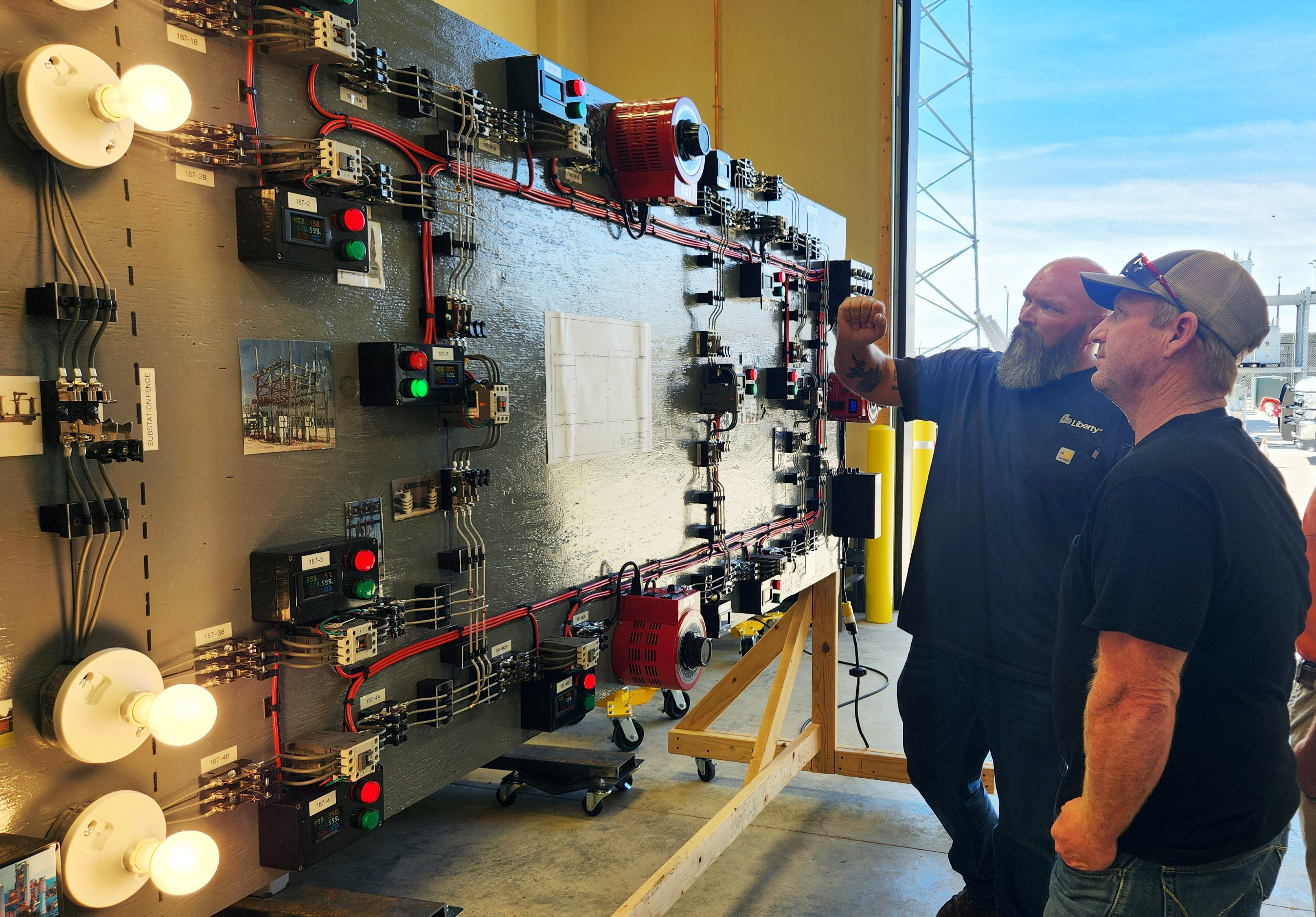The series of wires, breakers, and switches stretch across the board, with digital meters displaying the current, voltage, watts, hertz, and power factors.
While it may seem like a complicated arrangement up close, taking a few steps back allows you to see the bigger picture. What you’re looking at is a scale model of an electric substation … a hands-on training tool that can help teach electrical theory and switching in a safe and controlled environment.
The mock substation was designed and built by Cody McDaniel, Manager-Technical Training, at Liberty’s Kodiak operations and training center in Joplin, Missouri.
“We wanted to show the unity between our electricians at the substation and our linemen,” McDaniel says.
That “unity” comes through training that allows them to see how their jobs fit into the larger picture of Liberty’s electrical operations. And that knowledge leads to better collaboration, improved restoration efforts, and – most importantly – safer and more reliable service for customers.

“It’s an actual representation of a lot of substations,” McDaniel says of the new training tool. “It’s a ring bus transmission substation with two distribution transformers, low mains, and four feeder breakers.”
To offer a better understanding of what each component of the mock substation represents, photographs have been added to the board to showcase their real-world counterparts.
The simulator allows you to close breakers, check voltage levels, and reroute power as sections are taken offline. The simulator offers a way to learn about the switching orders needed if a piece of equipment must go out of service for repair or replacement.
Curtis Brumfield, Engineer II-Substation, put together a one-line diagram for the substation simulator.
A one-line diagram serves as something of a blueprint of an electric power system. In this case, it serves as a map of the flow of power within the substation and how the equipment such as transformers and circuit breakers is connected.
The simulated substation has a ring bus configuration. Circuit breakers and switches are arranged in a loop in such a way that parts of the ring can be isolated for repairs without shutting down the entire substation.
“If you were in an airplane, this is kind of how you would see it from above,” Brumfield said.
Jacob Moore, Manger-Technical Training, says the new simulator will help Liberty lineworkers to see the bigger picture in terms of their jobs and creating better collaboration with their counterparts.
“Now I’ll be able to bring my guys in and Cody can walk them through it,” Moore said. “They can really understand what’s going on, how all the pieces fit together, and really have a thorough understanding of what’s going on.
“At the end of the day, we’re pushing for our guys to not just be installers but understand how all the pieces of the puzzle fit together. If the substation electricians are working inside the fence at the substation and I’m outside, we can understand each other better.”
